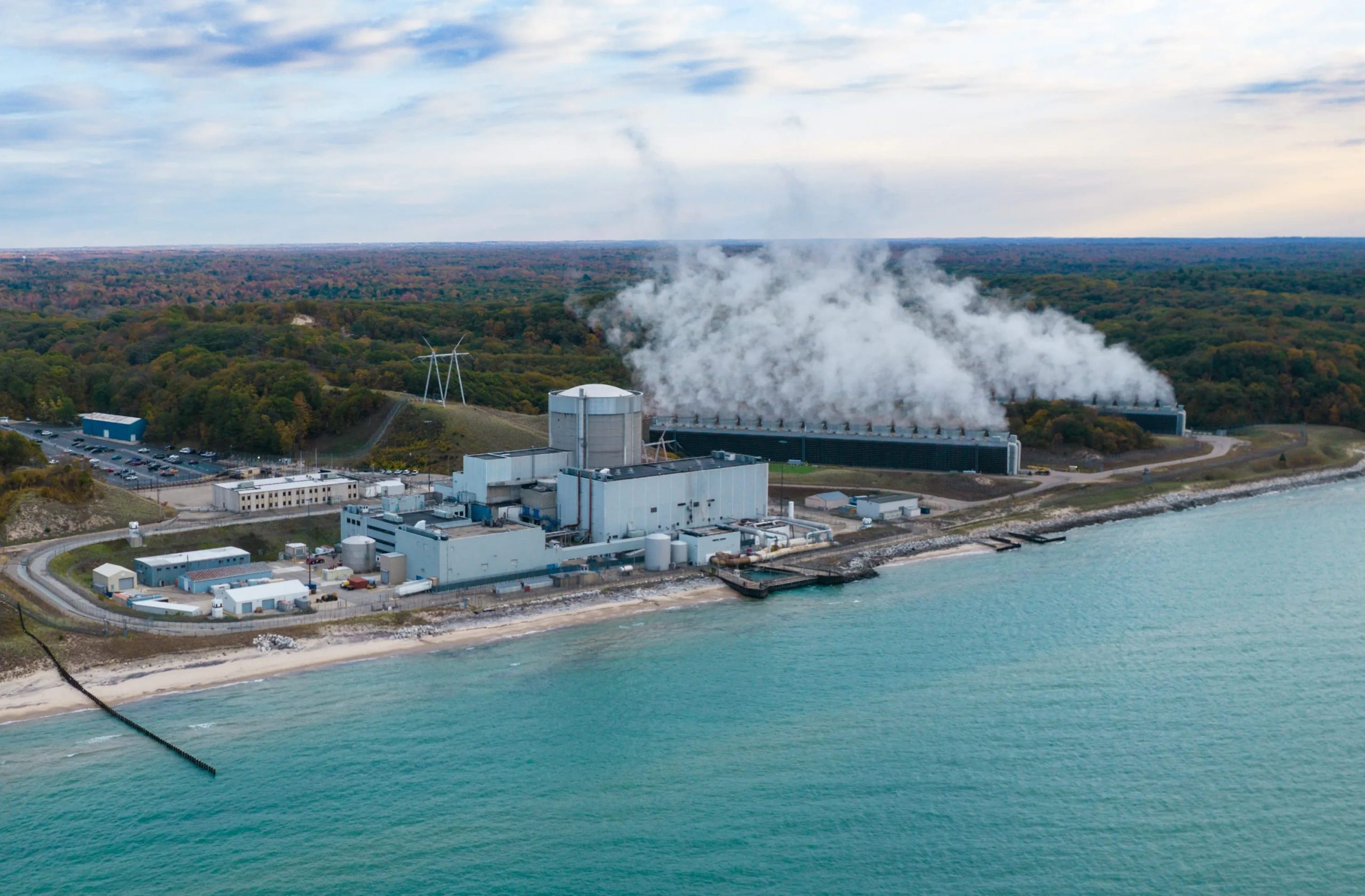Science and technology

Science and technology
Invisible Enemy in Your Home: FBI Warns of a Botnet Taking Over Millions of Devices
KLEVELED, Ohio — Imagine: your television streaming device, digital photo frame, or even a car infotainment system that you purchased at a good price is secretly working against you. These everyday gadgets, cozy in your homes, could be part of a global cybercriminal network known as BADBOX 2.0. In a new warning, the Federal Bureau of Investigation (FBI) is sounding the alarm, stating that millions of Android devices, mostly manufactured in China, are being turned into pawns by hackers who use them for fraud, data theft, and concealing criminal activity. This threat lurking in the shadows of your home network challenges our notions of security in the era of smart technology.
The botnet hiding in gadgets
BADBOX 2.0 is an evolution of malicious software first discovered in 2023 on inexpensive Android devices such as T95 streaming boxes. German law enforcement disrupted the operation in 2024 by intercepting communications between infected devices and the hackers' servers. However, like a phoenix rising from the ashes, the botnet re-emerged in 2025, becoming even more insidious. According to the FBI, over 1.6 million devices across 222 countries—from Brazil to the USA—are already infected, and this number continues to grow.
The majority of affected gadgets are low-cost, uncertified Android devices running on the Android Open Source Project (AOSP), without Google Play Protect security. They include streaming boxes, projectors, digital photo frames, tablets, and even aftermarket automotive systems. Often these devices come pre-installed with malicious software, or infection occurs during setup when users unknowingly download counterfeit apps from unauthorized marketplaces. “This is not just a technical issue; it’s an invasion into our homes,” notes Gavin Reed, Chief Information Security Officer of Human Security, which detected BADBOX 2.0 in March 2025.
Once infected, the device connects to command servers operated by hackers, becoming part of a botnet used for various crimes: from ad fraud, where the gadget secretly “clicks” ads, to proxy networks masking cyberattacks, making them appear as normal home traffic. “Your IP can be used to attack banks or government agencies, and you may not even be aware of it,” warns Fyodor Yarochnyk, senior researcher at Trend Micro.
A global threat from Chinese factories
The FBI emphasizes that most infected devices are manufactured in China, where producers use vulnerable versions of Android that are not certified by Google. Some models, such as TV98 or X96mini, are even linked to Malaysian company Longvision Media, which, according to Human Security, used hidden browsers to simulate gaming activity and display advertisements. The highest infection rates are recorded in Brazil (37.6%), the USA (18.2%), and Mexico (6.3%), where inexpensive gadgets are popular.
This scheme is partially connected to the Chinese Lemon Group, known for using the Triada Trojan, which underpins BADBOX. Human Security researchers identified connections between botnet domains and the Dove Proxy proxy service owned by this group. “It’s not just hackers in a basement; it’s an organized industry earning millions from our devices,” says Emily Walker, a cyber analyst at Shadowserver Foundation, involved in efforts to dismantle the botnet.
Why is this important?
BADBOX 2.0 is not only a technical threat but also a symptom of a broader problem: vulnerabilities in the global technology supply chain. Cheap gadgets flooding the markets often sacrifice security for low cost, and consumers tempted by free content offers become easy targets. In 2024, an attempt by Google, Human Security, and other partners to block communication with 500,000 infected devices only had a temporary effect—within a week, the botnet was back, infecting 192,000 new gadgets, including products from well-known brands like Hisense and Yandex.
For Americans, this threat is especially relevant, as 146,000 infected IP addresses have been recorded in the US. “This isn’t just about your TV; it’s about your privacy and the security of your entire network,” emphasizes FBI Captain James Kelly, who is coordinating the investigation. He adds that the botnet could be used to attack critical infrastructure, from power grids to financial systems.
How to protect yourself?
The FBI urges Americans to check their gadgets for signs of infection: unusual internet traffic, requests to disable Google Play Protect, unknown apps, or pop-up messages offering free content. Experts recommend:
Purchasing only certified devices from reputable brands, avoiding “unlocked” streaming boxes.
Not downloading apps from unofficial marketplaces, even if they promise free access to Netflix or Disney+.
Regularly updating firmware and operating systems, especially after reports of vulnerabilities.
Using antivirus software, such as Bitdefender Mobile Security, and monitoring network traffic with tools like NETGEAR Armor.
If you suspect infection, the FBI advises to immediately disconnect the device from the network and report the incident via the Internet Crime Complaint Center (www.ic3.gov).
A look into the future
While the FBI and cybersecurity experts combat BADBOX 2.0, malicious actors are adapting, hiding malicious software in fake apps on Google Play under names like “Earn Extra Income” or in HTML5 games. This cat-and-mouse game underscores the vulnerability of the modern world, where every connected device is a potential loophole for criminals. For Americans accustomed to trusting their gadgets, this serves as a sobering reminder: in pursuit of cheap technology, we may unknowingly open the door to digital chaos.
02.07.2025

Science and technology
Ohio Against Deepfakes: How the State Is Trying to Save Truth in the Age of Artificial Intelligence
COLUMBUS, Ohio — In a world where the line between reality and fiction is blurring faster than one can click "share," Ohio legislators are taking a bold step to tame the chaos caused by deepfakes and artificial intelligence (AI)-generated content. Bill No. 185, proposed by representatives Adam Methuys (a Republican from Lebanon) and Taey Methuys (a Republican from Findlay), aims to establish clear rules for the digital landscape where malicious fakes can ruin reputations, undermine trust in elections, or even be used as tools for blackmail. As AI becomes increasingly accessible and fake videos and photos flood the internet, Ohio positions itself as a pioneer in the fight for truth.
“Artificial intelligence is improving every day, and it’s both a miracle and a threat,” said Adam Methuys, standing in front of the state Capitol. His bill, promoted amid rising concerns about disinformation, calls for clear labeling of AI-generated content if it can mislead a "reasonable person." From fake political speeches to manipulated images of celebrities — Ohio wants to draw a line between creative freedom and malicious lies.
The new reality of the digital age
The problem of deepfakes is not new, but its scale is rapidly increasing. According to Erman Aiday, a law professor specializing in technology at Case Western Reserve University, AI tools like Midjourney or DALL·E allow anyone to create realistic videos or photos in just minutes — from an innocent image of oneself on a tropical beach to a fake speech by a politician calling for a boycott of elections. “This technology democratizes creativity but also arms malicious actors,” Aiday notes. In 2024, for example, a fake AI-created video of Ohio Governor Mike DeWine went viral on social media, causing panic among voters ahead of local elections.
Bill No. 185 is aimed at giving back control to citizens. It defines the creation of malicious AI content without a person's consent as a violation of trademark rights, which could result in fines worth tens of thousands of dollars. Distributing deepfakes for extortion purposes is classified as a third-degree felony, and pornographic deepfakes or content involving children are strictly prohibited regardless of labeling. “This is about protecting ordinary people,” Methuys emphasized. “Your face, your voice — that’s your property.”
Implementation challenges
While the bill has garnered broad support, its implementation raises doubts. According to Aiday, anonymity in the digital world complicates tracking down malicious actors, especially during election campaigns where misinformation spreads rapidly. In 2023, for example, an anonymous Telegram channel circulated a fake video of Senator Sherrrod Brown, which caused his campaign considerable effort to debunk. “Until we have technology for instant deepfake detection, bad actors will hold the advantage,” Aiday warns.
Insiders in Capitol Hill report that both Republicans and Democrats support the bill, which is rare amid Ohio’s political polarization. However, some lawmakers express concerns about possible restrictions on free speech. “Political cartoons or satire are not the same as malicious deepfakes,” Methuys explained. “We want to protect creativity but prevent deception.” The bill explicitly excludes content that a “reasonable person” would immediately recognize as artificial, such as obvious cartoons or parodies, from regulation.
The broader context
Ohio is not alone in its fight. In 2024, California and Texas enacted similar laws regulating deepfakes in political advertising, but Ohio went further by covering a wider range of content, including personal images and audio. At the federal level, Congress is considering the Deepfake Protection Act of 2025, but its progress is slowed by disagreements over balancing free speech and disinformation prevention. “Ohio could become a model for other states,” Aiday believes, citing Ohio’s history of strict technology regulation, such as the 2018 data protection laws.
The issue transcends politics. In Cleveland, local activist Miah Jones became a victim of a deepfake that used her image for fraudulent advertising. “It was humiliating,” she recounts. “People thought I was endorsing something I had nothing to do with.” Such stories highlight the human dimension of the problem Ohio seeks to address.
Looking ahead
Bill No. 185, which is under review this week, could change the rules of the game for digital ethics in Ohio. If passed, it will be one of the first in the US to grant citizens ownership rights to their digital images. However, success depends on technological implementation — from improving AI detection systems to collaborating with platforms like X or TikTok to swiftly remove malicious content.
For Ohio residents increasingly facing digital manipulation, this law offers a ray of hope. “We cannot stop AI progress, but we can make it safer,” Methuys concluded. While debates continue, one thing remains clear: in a world where truth is a luxury, Ohio is betting on protecting reality — one photograph at a time.
17.06.2025

Science and technology
CES 2025: The Technological Revolution in the Era of Artificial Intelligence and Human Hope
In the glow of neon lights and the hum of innovations at CES 2025, the world’s largest technology exhibition gathered over 141,000 visitors from around the globe to showcase where humanity is headed. From robots that look like pets to AI-powered televisions and reimagined electric vehicles redefining mobility, the event held from January 7 to 10 became an arena for the ambitions and anxieties of the technological era. While companies from Nvidia to Hyundai demonstrated groundbreaking products, CES 2025 reflected a deeper narrative: a world where artificial intelligence (AI) becomes not just a tool but a partner shaping our future—raising questions about what it means to be human in the age of machines.AI Everywhere: From Televisions to RoadsArtificial intelligence dominated CES 2025, permeating every aspect of the exhibition, from consumer electronics to industrial solutions. Samsung introduced Vision AI for their TVs, allowing users to control devices via natural language, from selecting movies to planning vacations. Google went further, integrating Gemini AI into its smart TV platform, promising not only entertainment but also assistance with homework or smart home management. “AI is no longer an app, it’s the foundation,” — stated S.V. Young, Samsung Vice President, during the keynote on January 5.Nvidia, often dubbed the unofficial winner of the exhibition, raised the stakes by unveiling Cosmos AI—a foundational model that helps robots and autonomous vehicles better understand the physical world. Their Project Digits, a “personal AI supercomputer” for researchers and students, generated excitement among developers, promising to democratize access to advanced computing power. “We are building not just technology, but an intellect that collaborates with us,” — declared Nvidia CEO Jensen Huang, whose keynote drew a full house.But AI was not confined to screens or labs. Volkswagen announced the integration of ChatGPT into its voice assistants, enabling drivers to ask complex questions—from finding restaurants to explaining quantum physics. Honda showcased electric cars from the 0 series that utilize AI to optimize routes and energy consumption, while XPENG AEROHT impressed the audience with a modular flying car that combines autonomous driving with electric propulsion. “Cars are no longer just transportation—they are smart companions,” — said Yasuhiro Mizuno of Sony Honda Mobility, introducing the electric AFEELA 1.Mobility and Quantum HorizonsMobility was another star of CES 2025, demonstrating how technology is transforming not just roads but the sky and seas as well. Innovations spanned construction, agriculture, and even maritime engineering. Aptera unveiled a three-wheeled electric car priced at $40,000 with aerodynamic design and nearly 50,000 pre-orders, promising production to start later this year. BMW amazed attendees with the Panoramic iDrive system—a wide digital display across the dashboard to be included in new models from 2025.Quantum technologies, though less visible, opened the door to the future. The exhibition showcased progress in quantum computing, networking, and sensors, which experts say could revolutionize finance, chemistry, and logistics. “Quantum computers working alongside AI are like adding a turbocharger to the human mind,” — remarked an IBM representative whose demonstrations attracted investor interest.The Human Touch: From Robots to Salty SpoonsDespite the futuristic shimmer, CES 2025 also reminded us of the desire for technologies to serve human needs. Jennie, a robotic puppy from Hyve, impressed visitors with its realism, promising to become an emotional companion for $300 starting June 2025. “It’s not just a robot; it’s a friend,” — said a Chicago visitor who tested Jennie. The Kirin Electric Salt Spoon, which uses electrical impulses to mimic the salty taste without adding salt, became a hit among health-conscious consumers, although some skeptics questioned its practicality.Digital healthcare also shone. Wearable devices for monitoring heart rhythms and AI systems for early diagnosis were displayed at Venetian booths. “Technology is becoming an integral part of our health—like thermometers were a century ago,” — noted a Consumer Technology Association (CTA) analyst.Shadow of Tragedy and the Energy DilemmaCES 2025 was not without its shadows. Fires in Los Angeles that broke out on the opening day drew media attention, reminding us of vulnerability to natural disasters. Some participants, whose colleagues were affected by the fires, quietly left the show to help loved ones. “Technology is impressive, but nature reminds us who’s boss,” — said one attendee from California.The energy crisis also posed a challenge for exhibitors. Growing demand for energy from AI and cloud technologies led companies like Intel and AMD to introduce new chips emphasizing energy efficiency. The exhibition also highlighted experimental solutions—from green hydrogen systems to small modular nuclear reactors that could power future data centers. “AI is the engine of progress, but it needs fuel,” — said a CTA representative, emphasizing a focus on decarbonization.Global Stage: Leaders, Diplomats, InnovatorsCES 2025 reaffirmed its status as a global platform. 158 government representatives from around the world participated in the CTA Leaders in Technology program, discussing challenges related to scaling innovation. Visitors from Asia, Europe, and Latin America filled 2.1 million square feet of exhibition space, where 4,500 exhibitors—from startups to giants like LG and Asus—competed for attention. “This is a place where ideas become reality,” — said one investor who struck a deal with a quantum startup right at the show.But behind the shine were concerns. Insiders note that many products, from Lenovo’s expanding screens to Hisense’s 163-inch MicroLED TV, remain concepts or come at exorbitant prices, such as Lenovo’s foldable-screen laptop costing $3,499. “CES is a show of dreams, but not all dreams come true,” — says ZDNET analyst Allison Murray.The Future We Are BuildingCES 2025 served as a mirror of our times: a world balancing between excitement and caution, between AI promising to solve global problems and the challenges it creates. From the Dreame X50 Ultra, the first robot vacuum with legs to overcome obstacles, to biodegradable paper batteries, the exhibition demonstrated how technology can be both futuristic and human-centered.For Las Vegas, which welcomed 141,000 visitors, CES was an economic blessing; but for the world, a moment of truth. Can we steer AI, quantum computing, and electric mobility for the benefit of all, not just the chosen? Can we maintain a balance between innovation and sustainable development? As leaders, innovators, and diplomats left the exhibition halls, these questions echoed in the air, like drones over the booths. CES 2025 did not provide final answers, but it reminded us: the future is not something that happens to us, but something we create together.
22.05.2025

Science and technology
When Giants Influence Orbit: How the Chinese Dam Is Changing the Flow of Earth’s Time
In an era when time seems to be the most precious resource, science once again reminds us: its value is not as immutable as it seems. NASA officially confirmed that the massive hydropower plant "Three Gorges," which crosses the Yangtze River in Hubei province, China, affects not only the region's energy balance — it literally alters the length of the day on the planet.
According to Dr. Benjamin Fong Chong, a leading geophysicist at NASA's Goddard Space Flight Center, this engineering colossal, holding over 40 cubic kilometers of water — nearly 10 trillion gallons — has increased the length of the day by 0.06 microseconds. A seemingly negligible change, which, nonetheless, can be accurately measured with modern high-precision instruments.
"It's like a figure skater opening their arms, slowing down the rotation," notes Dr. Chong. "The mass of water lifted 175 meters above sea level alters the distribution of mass on the planet. This effect is minimal but entirely real."
The impact of such a large-scale project is felt not only in numbers. According to NASA, the object shifted the Earth's axis of rotation by approximately two centimeters. These microscopic changes do not have a direct impact on our daily lives, but they emphasize: human infrastructure is already capable of influencing the dynamics of the entire planet.
And although the increase in the length of the day by 0.06 microseconds is only a third of a billionth of a second, in the scales of geophysics and planetary science it sounds like a distant thunder: not loud, but distinctive.
The "Three Gorges" dam, completed in 2012, is not only an architectural marvel but also one of the most controversial energy projects in the world. With a capacity of 22,500 megawatts, it generates as much electricity as 15 nuclear reactors, providing China with critically needed renewable energy and reducing coal use. At the same time, its ecological and geopolitical price has repeatedly become the subject of intense debates.
For NASA experts, this is yet another example of how human engineering is already embedded in Earth's geological history. "Large infrastructure objects like this dam demonstrate how closely local actions are intertwined with global consequences," summarizes Chong.
And if you are currently asking yourself what can be done with your new 0.06 microseconds — unfortunately, the answer is not much. However, it serves as a reminder of our progress in not only impacting the environment but also precisely measuring it — even on scales smaller than a breath.
06.05.2025

Science and technology
Revolutionary 3D scanning reveals new facts about the sinking of the Titanic
On the 113th anniversary of the legendary «Titanic» disaster, which has forever been etched in history as one of the most tragic maritime events, National Geographic presented a sensational documentary project that sheds new light on the circumstances of the ship's sinking. Thanks to advanced 3D technologies, researchers have created a detailed digital model of the liner — down to each rivet, hatch, and even steam valve.
The project was implemented in 2022 by a team led by director Anthony Geffen, with the participation of deep-sea mapping specialists from Magellan company. Analyzing the collected data took almost two years, during which scientists conducted one of the most extensive studies of the shipwreck debris lying at a depth of over 3.8 km beneath the North Atlantic surface.
One of the key findings of the study is the discovered open steam valve, which indicates that many crew members remained at their posts until the end, maintaining the power supply. These heroic efforts allowed signals of distress to be transmitted longer, even though there were hardly any ships around capable of coming to help — the nearest was hundreds of miles away.
The scan results also cast doubt on the classic portrayal of the «Titanic» sinking popularized by James Cameron’s film. Unlike the dramatic scene of the ship breaking in two, the research shows that the hull was literally torn apart with brutal force, destroying the first-class cabins, where passengers such as John Jacob Astor and Benjamin Guggenheim likely were.
Another important point is the rehabilitation of first officer William Murdoch. For decades, he was accused of fleeing the scene, but new evidence suggests that he perished along with the crew during the attempt to rescue others, unable to reach the lifeboats.
The insufficient number of life-saving equipment on board the «unsinkable» ship also remained a critical problem: only 20 lifeboats capable of holding up to 1,200 people, which is significantly less than the 2,240 passengers and crew members onboard.
Besides historical discoveries, the documentary draws attention to the current state of the wreckage. Deep-sea 3D scanning has shown that the remains of the ship are rapidly deteriorating — pressure, corrosion, and bacterial colonies continue to ravage the legendary structure.
Nonetheless, in 2026, billionaire Larry Connor plans to conduct a new expedition to the disaster site using an underwater vehicle. This initiative has already sparked a wave of criticism — from scientists, governments, and relatives of the victims, who urge to respect the memory of those who perished and not turn the tragedy site into a sensational spectacle.
The new National Geographic documentary not only offers a unique visual experience but also rethinks the heroism, sacrifices, and circumstances of one of the saddest pages in human history.
05.05.2025

Science and technology
The asteroid that passed Earth could collide with the Moon in 2032
Asteroid 2024 YR4, which was previously considered potentially hazardous to Earth, may now pose a threat to the Moon. Recent observations, including those using the James Webb Space Telescope (JWST), have allowed for a refinement of the characteristics and trajectory of this celestial body.
Discovery and initial risk assessments
Asteroid 2024 YR4 was discovered in December 2024. Initial calculations indicated a possibility of its collision with Earth on December 22, 2032, which at one point reached a probability of 3.1%. This caused significant concern among scientists and the public.
Asteroid 2024 YR4 in images from the James Webb Telescope. Source: NASA, ESA, CSA, STScI, A Rivkin (JHU APL)
Refinement of parameters with JWST
Further observations, including those with JWST, allowed a more precise determination of the asteroid's size and composition. Its diameter is estimated to be between 53 and 67 meters, larger than previously anticipated. The surface of the asteroid was found to be rocky, without a significant dust layer, and rapid rotation of the object was also recorded.
Trajectory change and potential threat to the Moon
Thanks to the refined data, scientists concluded that the risk of 2024 YR4 hitting Earth in 2032 is practically nonexistent. Instead, there is a probability (about 3.8%) of it colliding with the Moon in December 2032.
Possible consequences of a collision with the Moon
If the asteroid collides with the Moon, it will create a crater up to 2 km in diameter. Since the Moon lacks an atmosphere, the impact would occur unobstructed, and the resulting crater would be clearly visible from Earth with telescopes or even binoculars. For the scientific community, this would be a unique opportunity to observe the process of lunar crater formation in real time, which could provide valuable data for planetary defense of Earth.
Further observations and conclusions
Although the risk to Earth is absent and the probability of collision with the Moon remains low, astronomers continue to monitor 2024 YR4. The next favorable observation window is expected in 2028, when the asteroid will again approach Earth, allowing for better orbit refinement and more accurate predictions of its future movement.
19.04.2025

Science and technology
Revolution in the Battery Sector: FIU Researchers Solved the Range Issue
One of the main obstacles to mass adoption of electric vehicles remains the so-called "range anxiety" – the fear that the vehicle might run out of power while on the road, leaving the driver without quick recharging options. But new research from Florida International University (FIU) could fundamentally change the situation.
Researchers are working on revolutionary lithium-sulfur batteries that can increase the driving range of electric vehicles threefold – up to 1,000 miles without recharging. Additionally, they are cheaper, lighter, and less harmful to the environment than traditional lithium-ion batteries.
What distinguishes new batteries from existing ones?
Range – increasing mileage from 300 to 1000 miles.
Cost – such batteries could be nearly half the price of lithium-ion counterparts.
Durability – they withstand more charge cycles, eliminating the need to replace the battery throughout the vehicle's lifespan.
Environmental friendliness – they use sulfur, a byproduct of the oil industry, reducing the need for extracting scarce metals.
Scientific breakthrough: platinum as a catalyst
Despite their advantages, lithium-sulfur batteries previously had a critical drawback – they degraded quickly and lost capacity. However, Professor Bilal El-Zakhab and his team found a solution.
How does it work?
Scientists added platinum to the battery composition. It acts as a "traffic regulator," directing the flow of energy inside the accumulator. This helps reduce energy losses and improves charging efficiency.
Economy and accessibility
Cost reductionCurrently, lithium-ion batteries cost about $100 per kilowatt-hour, whereas lithium-sulfur batteries could potentially cost $60 per kilowatt-hour. This will decrease the overall price of electric cars, making them more accessible.
Lighter weight – longer tire lifeSince new batteries are twice as light, electric vehicles will cause less wear on tires and other components, which will also reduce maintenance costs.
When will the technology be available?
FIU has already received $4 million in investments from the Canadian company Lion Battery Technologies. Commercial production is expected to start by 2030, although the technology still requires further refinement.
Competition for the “ideal battery”
FIU is not the only laboratory working on alternatives to lithium-ion batteries:
Purdue University is experimenting with recycled plastic to extend the lifespan of sulfur batteries.
Researchers from Australia have applied a chemical catalyst based on polyvinylpyrrolidone to stabilize batteries.
It is expected that by 2030, global automakers will spend over $500 billion on the development of electric transport and battery technologies.
Conclusion
Lithium-sulfur batteries are the future of electric transport. They are cheaper, lighter, and more environmentally friendly than traditional lithium-ion batteries. A range of up to 1000 miles will eliminate “range anxiety” and make electric vehicles even more attractive to the mass consumer. Commercialization is expected within the next decade, which could significantly transform the entire electric transport industry.
13.04.2025

Science and technology
Cleveland could become NASA's new home: Ohio offers unique opportunities
Why Cleveland?
Ohio Governor Mike DeWine officially addressed President Donald Trump with a proposal to relocate NASA's headquarters to Cleveland, specifically to the Glenn Research Center. In his letter sent on Friday, he emphasized that this move would be economically advantageous and strategically sound for the future of the US aerospace industry.
Ohio – the heart of American aviation
DeWine noted that Ohio is the cradle of aviation and one of the main centers for aerospace innovation in the United States. The state is home to:
US Air Force Research Laboratory at Wright-Patterson Air Force Base
Aerospace and Defense Innovation Center
NASA Glenn Research Center
According to the governor, synergy among these institutions will help NASA gain unique opportunities for research and development.
Economic benefits and decentralization
DeWine also emphasized that relocating NASA’s headquarters would align with the policy of decentralizing federal agencies, supported by the Trump administration.
Main advantages of Cleveland over Washington:
Lower living and operational costs
Access to leading research institutions
Stimulating regional economic development
What does this mean for Ohio?
If NASA’s headquarters relocates to Cleveland, it will:
Secure Ohio’s position as an international leader in space research
Provide new investments in high-tech industries
Create new jobs and development opportunities for the region
"Relocating NASA's headquarters to Cleveland would strengthen Ohio’s position as an international leader in space exploration and aeronautics," — emphasized DeWine.
Now, the decision rests with the Trump administration and NASA leadership. If the proposal is supported, it will be a historic step for Ohio and the entire US aerospace industry.
28.03.2025

Science and technology
Holtec expands the small modular reactor construction plan at the Palisades Nuclear Power Plant
The Holtec International company is stepping up its efforts to build the first small modular reactors (SMRs) in the United States at the Palisades nuclear power plant site in Cowpert, Michigan. On Tuesday, Holtec signed a broader agreement with Hyundai Engineering & Construction, marking an important step toward realizing this ambitious project.
It is expected that the first reactors will be built by 2030. Holtec also plans to restart the Palisades nuclear power plant, which will serve as a starting point for a nuclear renaissance in the U.S.
Holtec’s Plan: a New Era of Nuclear Power
Holtec and Hyundai held a ceremonial signing event on the premises of the Palisades nuclear power plant. Company representatives stated their intention to build a park of small modular reactors across North America throughout the 2030s.
«The project to restart the Palisades plant along with the construction of small modular reactors will make southwest Michigan a center of nuclear innovation», — said Holtec.
Currently, Holtec is preparing to obtain a construction license from the U.S. Nuclear Regulatory Commission in early 2025.
What are small modular reactors?
According to the International Atomic Energy Agency (IAEA), small modular reactors can produce about a third of the energy generated by large nuclear power plants.
Key advantages of SMRs:
Smaller size and easier maintenance
Can be quickly factory-produced
Easy to transport and install
Flexible in managing energy systems
Despite the promising technology, currently no small modular reactors are in operation in the USA. In 2023, the U.S. Department of Energy announced support for seven advanced nuclear projects, including the Palisades project, but all are still in development stages.
Holtec and Hyundai: The Path to “Mission 2030”
Holtec is actively developing its SMR-300 program, which involves constructing compact 300-megawatt reactors. Each will be capable of supplying electricity to approximately 300,000 homes.
Over the past year, Holtec has:
Determined the exact location for the future reactors
Launched Groundwater Monitoring Program
Carried out soil drilling to prepare the site
Holtec’s CEO Chris Singh expressed confidence in the implementation of “Mission 2030,” noting Hyundai’s experience in nuclear construction.
“Hyundai E&C has an outstanding track record – they successfully built the world’s largest nuclear complex in the UAE, which is a rare achievement in our industry”, — Singh stated.
Michigan Supports the Development of Nuclear Energy
At the same time, Michigan legislators developed a plan to promote nuclear energy development in the region. Key initiatives include:
Simplify procedures for deploying small modular reactors in MichiganFund educational programs in nuclear and hydrogen energyIntroduce tax credits for companies investing in new nuclear technologiesSupport jobs in the nuclear energy sector
The plan was signed by state legislators: Poline Wenzel, Joey Andrews, Jamie Thompson, Mike McFall, Sem Steklov and Greg VanWorcom.
“This plan creates a foundation for Michigan’s future energy — reliable, affordable, and innovative”, — said Greg VanWorcom.
What’s Next?
Thanks to the partnership between Holtec and Hyundai, as well as support from the Michigan government, the region could become a leader in clean nuclear energy.
Next steps:Obtaining construction permits in 2025Launching the small modular reactor projectImplementing “Mission 2030”
If the plan is successfully executed, Michigan will become a pioneer in the development of advanced nuclear energy in the USA, creating thousands of jobs and strengthening the country’s energy security.
19.03.2025